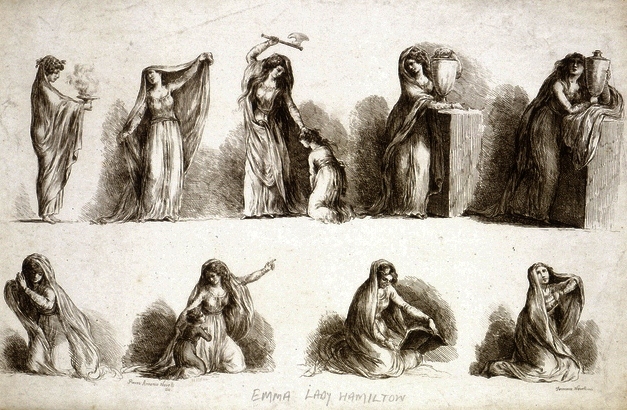


Mimoplastic art (also known as attitudes) is a performance art genre depicting works of art by use of mime, especially gestures and draping. Mimoplastic "attitude" is differentiated from the tableau vivant by its imitation of classical sculpture.[1] The genre depicted works of art, particularly classical subjects.[2]
It was popularized by Emma, Lady Hamilton.[3] Hamilton's art form may have developed after modelling for the painter, George Romney. Goethe wrote in 1787, "with a few shawls (she) gives so much variety to her poses, gestures, expressions etc., that the spectator can hardly believe his eyes... This much is certain: as a performance it is like nothing you ever saw before in your life".[4] The art form trended among upperclass European women between 1770 and 1815. They created mimoplastic art in their homes.[5] Ida Brun's attitudes included background music and narratives.[6] The literary scholar Henning Fenger (1921-1985), stated that Brun's "mimoplastic art captivated Europe".[7] Other notable performers included Henriette Hendel-Schütz[8] and the only male performer of attitudes, Gustav Anton von Seckendorff.
|
| |||||||||||||||||||||||
|---|---|---|---|---|---|---|---|---|---|---|---|---|---|---|---|---|---|---|---|---|---|---|---|
| |||||||||||||||||||||||
| |||||||||||||||||||||||
| |||||||||||||||||||||||